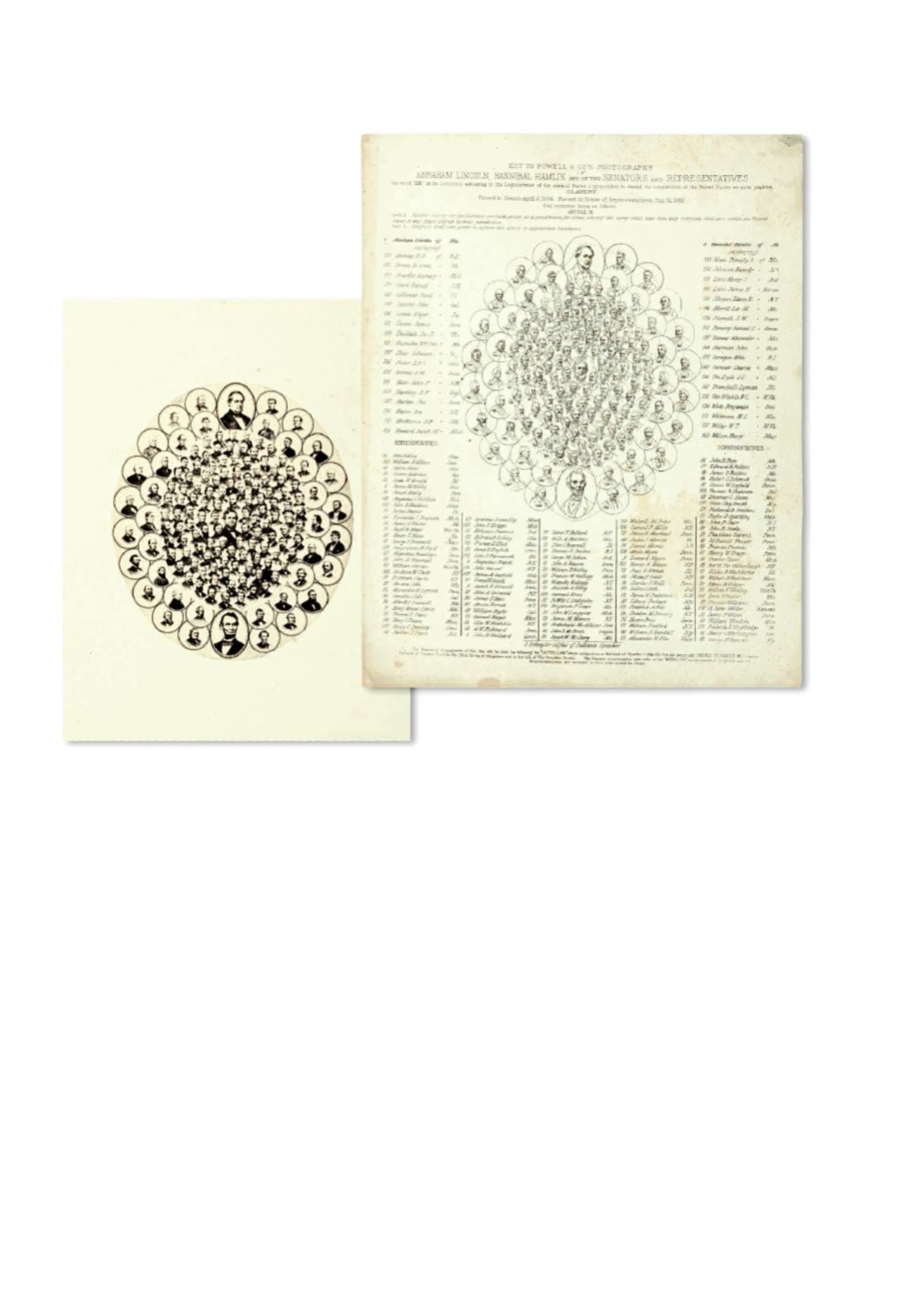

THE 13TH AMENDMENT
119
●
(SLAVERY AND ABOLITION—PHOTOGRAPHY.) LINCOLN, ABRAHAM.
Composite photograph of the members of Congress who voted “Aye” for the
13th Amendment.
9 x 8 inch oval albumen photograph, on the original mount 12 x 10
1
/
2
inches.
TOGETHER WITH THE ORIGINAL
“
KEY
”
TO THE PHOTOGRAPH
,
IDENTIFYING EVERYONE
.
Np [Washington, D.C.: George M. Powell, circa 1866]
[800/1,200]
A FINE
,
CLEAR COPY OF THIS RARE PHOTOGRAPHIC MONTAGE
.
The great statesman and
Republican Leader of the House, Thaddeus Stevens believed the Reconstruction amendments added to
the Constitution provided an opportunity to create “the more perfect union” that Lincoln mentioned
in his Gettysburg Address. Unfortunately, there were too few follow-up provisions for the nearly four
million people who were suddenly free, but essentially homeless and jobless.
120
●
(SLAVERY AND ABOLITION—PHOTOGRAPHY.) LINCOLN, ABRAHAM.
Oval collage of the signers of the Thirteenth Amendment to the Constitution
[supplied title]. Carte-de-visite photograph.
Np, circa 1865
[400/600]
The Thirteenth Amendment, was the first of three amendments made to the Constitution following the
Civil War. It officially outlawed slavery and involuntary servitude, except as punishment for a crime.
119









